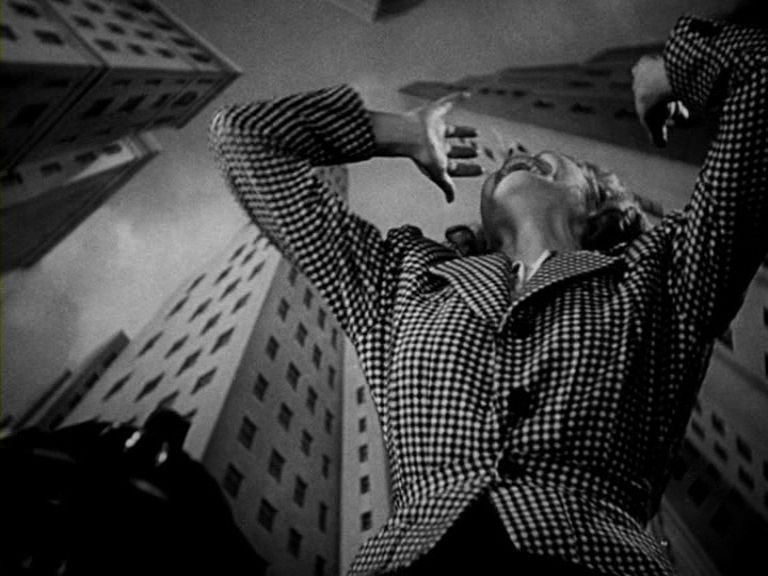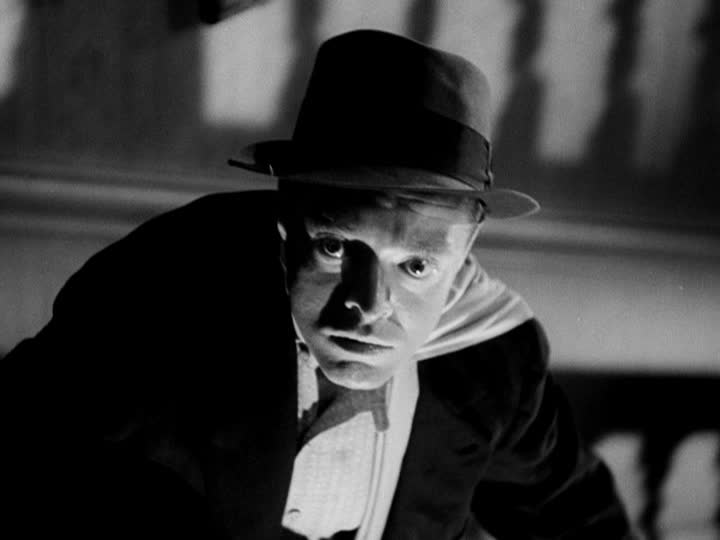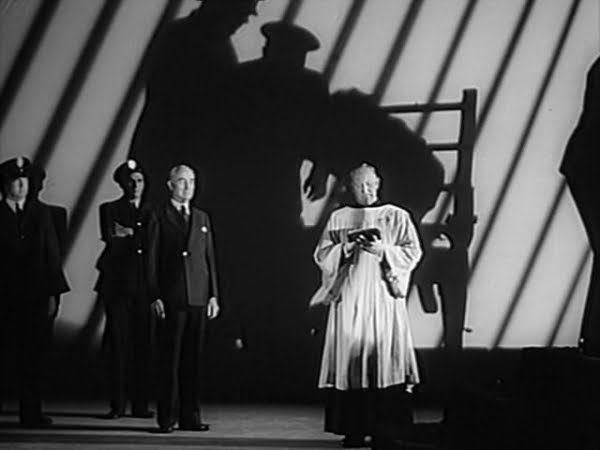
There has to be a first of everything, and more scholars name Stranger on the Third Floor as the first film noir than any film. (Personally, I go with the more popular and influential The Maltese Falcon, released 14 months later.) Indeed, due to the groundbreaking cinematography of Nicholas Musaraca, Stranger on the Third Floor did pioneer the look of German Expressionism in an urban American crime drama – so it has the look of a film noir.
A go-getter reporter (John Maguire) is the witness who placed a murder defendant (Elisha Cook, Jr.) at the scene of the crime. The reporter’s fiance (Margaret Tallichet), however, can’t stop worrying that an innocent man is going to the air, so the reporter turns detective to find exculpatory evidence. Mid-story, a creepy loner (Peter Lorre) shows up – is he the real murderer, and a serial killer to boot?
The engaged couple is sickeningly lovey-dovey. This sappiness and the corny ending almost disqualfy Stranger on the Third Floor from noirdom. But the story does has some noir aspects.
For one thing, it is very cynical about the American justice system. Elisha Cook, at his most loserly, is convicted by an apathetic court jury. Everyone involved in the trial, including his own lawyer and the judge, can’t wait to send him to the chair so they can go to lunch.
Then there’s Lorre, sneaking around like a malevolent elf. It’s almost as if he is sending up his serial killer role in M. He practically holds up an “I Am a Serial Killer placard”.

And the bland reporter hates his obnoxious neighbor so much that he has his own murder fantasies. His torment leads to a surreal nightmare. Most of the 1940 audience had probably never seen anything as bizarre as this dream sequence.
There’s also the voiceover interior dialogue so typical of film noir.
Margaret Tallichet, however, is very engaging. Her performance comes less than two years into her 43 year marriage to William Wyler, just before she left the movies to raise her kids.
And then there is Musaraca’s cinematography. There are shadows everywhere, most exaggerated during the nightmare scene. The faces are dramatically uplit. Musaraca really gives the film what was in 1940 an entirely fresh look.
In 1940, the Italian-born Nicholas Musaraca was already a Hollywood veteran, having operated cameras since 1923. Soon after Stranger on the Third Floor, Musaraca shot Val Lewton’s seminal horror films Cat People, The Seventh Victim and The Curse of the Cat People; the dark, dark look of those films also highly influential. Then Musaraca returned to noir with The Fallen Sparrow, Deadline at Dawn, The Locket, Out of the Past, Born to Be Bad, Roadblock, Clash by Night, The Hitch-Hiker, The Blue Gardenia, and Where Danger Lives. Along the way he shot films for Jacques Tourneur, Ida Lupino and Fritz Lang. All of these movies were before 1953. After 1955, Musaraca only worked in television, except for the 1957 noir Man on the Prowl.
In contrast, John Alton, the other great master film noir cinematographer didn’t get started in noir until noir’s high point of 1947-49, with his The Big Combo coming in 1954.
Turner Classic Movies sometimes airs The Stranger on the Third Floor. Or you can stream it from Amazon, iTunes, Vudu, YouTube or Google Play.

